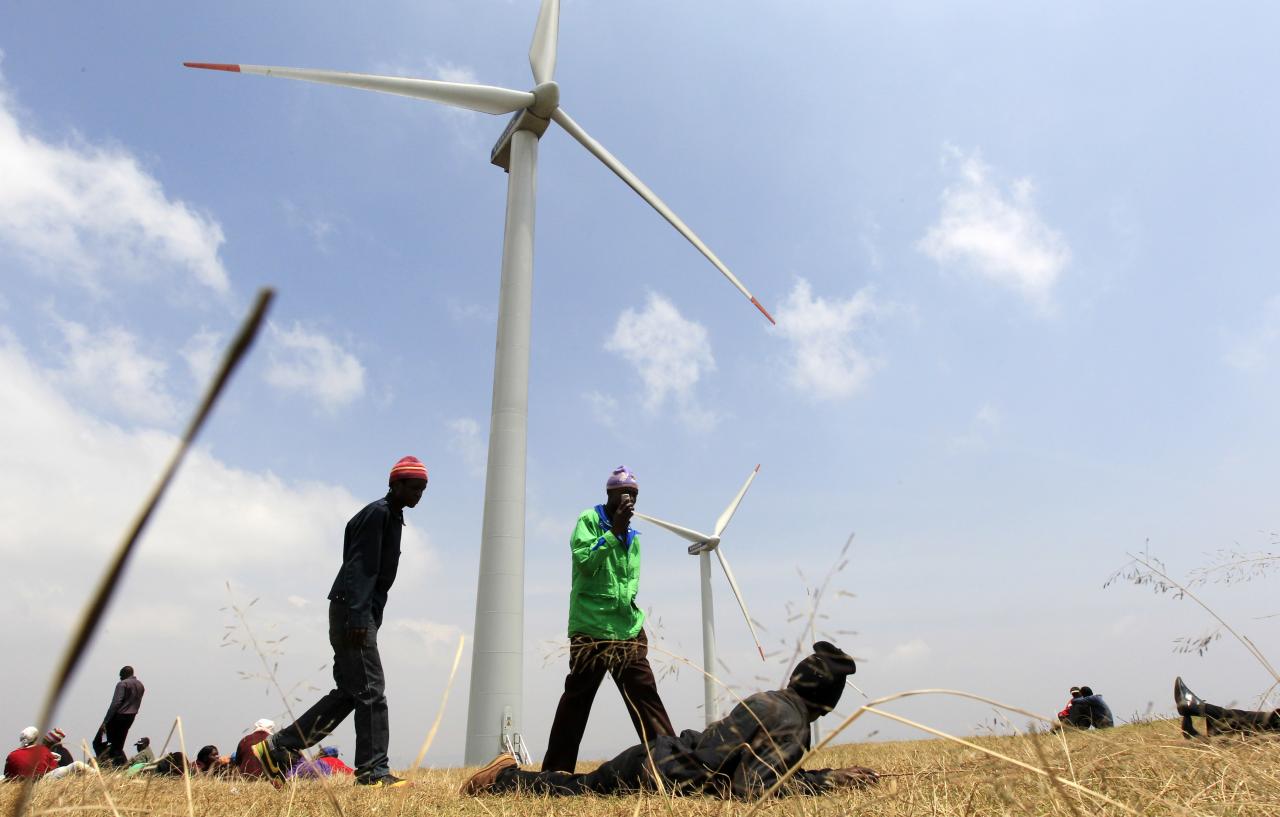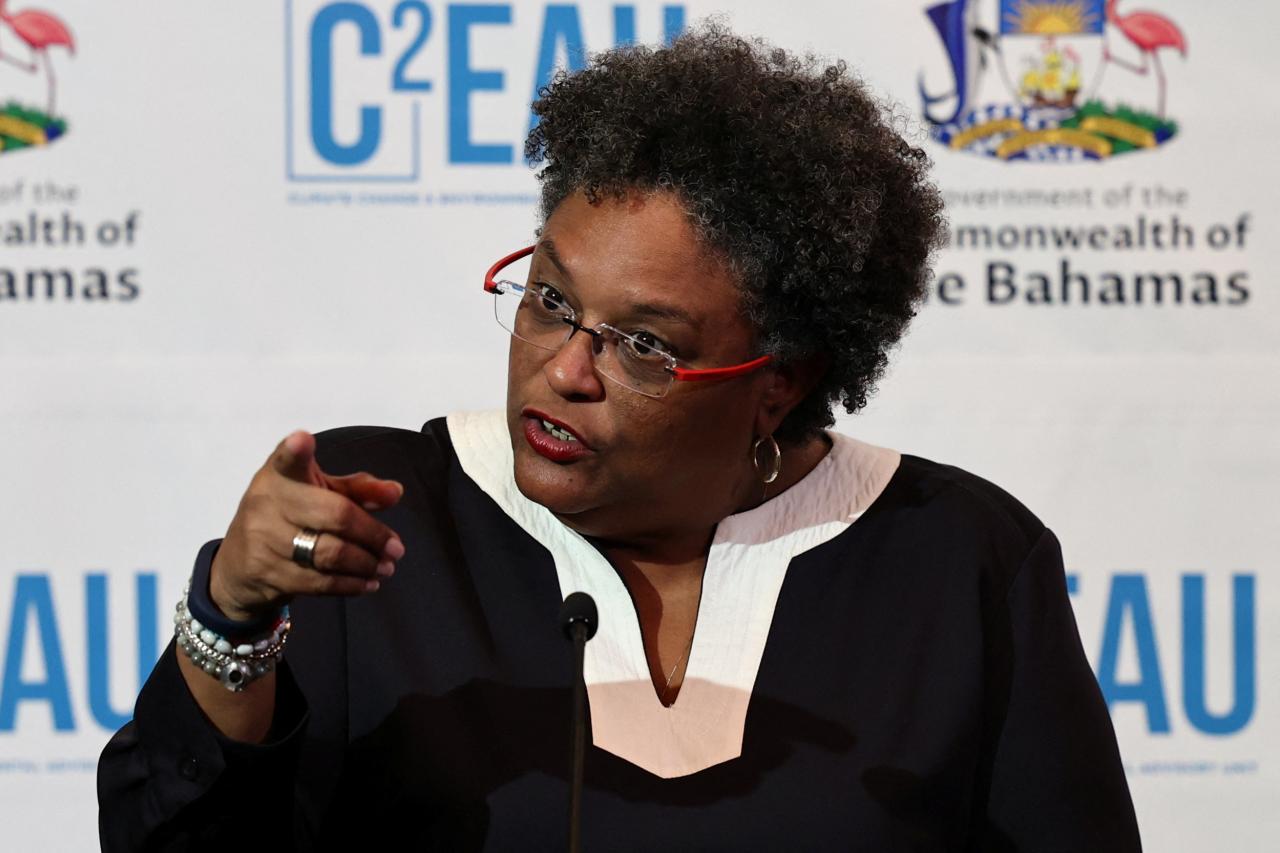
January 13 – There is a huge black hole in the funding needed for the climate and energy transition.
Currently, the costs (mainly for mitigation) are around $600 billion. Africa alone needs $3 trillion by 2030, and the world needs $3-6 trillion annually by 2050, according to the International Monetary Fund. That sounds like a lot, but private investors have money: They control $210 trillion worth of assets; Banks have the potential for an additional $200 trillion. How do you convince them to spend some of it?
The answer depends on the risk. Low- and middle-income countries are a risky proposition for investors, said Chris Klopp, CEO of Convergence Finance, a non-profit organization set up to increase investment in these countries to achieve the Sustainable Development Goals. Country and currency risks are so high that if investors invest, they will violate their fiduciary obligations to pension fund holders, shareholders and stakeholders or fail to comply with regulations.
But the appetite is there, says Clubb, if the risk is reduced enough to push him over the barrier. This is where blended financing comes into play: the use of public sector financing to reduce the level of risk to something acceptable to private investors.
Groups like the UN-backed Net Zero Asset Owners Alliance, which manages $10 trillion in assets, "say three things: First, we have money we want to invest. Second, we've seen developing countries and we want to invest money there, but the risks too high for us.” And third, if you can make a credit investment through mixed finance, we will invest.”
Mixed finance is not a new idea, but since the launch of the UN's Sustainable Development Goals (SDGs) in 2015, it hasn't worked out as expected. "We don't stick together on size. We mix small projects. So we have to break the glass to get more moving," said Guy Collins, vice president of banking, capital markets and trading at Citigroup. Council, at a side event at COP27 in November.

Convergence has tracked more than 700 mixed financial transactions over the past 15 years. Too often, says Klopp, only one donor government provides the money, limiting the size of the mix of financing instruments. On average, these transactions amount to around $70 million, which is quite a small amount for a change of scenery.
Bringing governments, multilateral development banks and the private sector together could change that. An example is the climate finance partnership announced at COP26 by asset manager BlackRock.
Focus on renewable energy infrastructure, energy transmission and storage in Latin America, Asia and Africa.
Funds raised amounted to 673 million US dollars. Of that, $130 million has been raised in so-called stimulus funding — a security buffer for reducing risks to the private sector — from the governments of Japan, France, and Germany, Total Energy, and philanthropic donors, including the Grantham Environmental Fund. Private investors, shielded from the greatest risks, pledged five times that – $523 million. The Partnership will soon sign its first agreement.
A number of commitments were made at COP27 in Sharm El-Sheikh. As part of a five-year partnership with Kenya, the UK government committed nearly £13 million to new underwriting companies that will reduce risk for investors and are expected to unlock an additional £80 million in climate finance for six energy projects. Agriculture and other sectors. Transport.
The clean energy pillar of Egypt's new Nexus Food, Water and Energy Program has attracted $500 million from international partners, including the United States, Germany and the European Union, to accelerate the adoption of renewable energy in the country.

The financing is expected to unlock at least $10 billion in private investment to install 10 gigawatts of solar and wind power by 2028 and phase out inefficient gas-fired power generation.
At COP 27, the Energy Transition Partnership (JET-P) pledged to mobilize $10 billion in public funds from partner governments to help Indonesia transition away from coal. Private investors joined in the Glasgow Alliance for Net Zero Finance (GFANZ) will raise an additional $10 billion. This was followed in December by the $15.5 billion JET-P program to help Vietnam undermine its goals in matière d'energie propre, the private sector engaging in public financing of $7.75 billion over four years.
An agreement for JET-P worth $8.5 billion for South Africa was announced at COP26 in 2021.
But compared to what's needed, these projects barely scratch the surface. The South Africa Investment Plan, launched a year after the partnership was announced, indicates that $98.7 billion is needed over the next five years to begin the country's transition away from coal. Sources of funding have been identified for about half of this figure.
At least a third is expected to come from private sources, but observers say donor countries are not using the past year to mobilize the level of concessional financing needed to attract the needed private investment. Nor did they address the huge debt piled up by state-run electricity company Eskom, which raised the stakes for investors.
The level of funding is a problem. What is spent is different. Most climate finance projects – about 90% – target mitigation, not adaptation. This is partly because mitigation projects (such as renewables) can generate cash flows to provide returns to investors, whereas adaptation projects generally cannot.
Anjali Vishwamahanan, policy director at the Asian Investors Group on Climate Change (AIGCC), said more innovation, time and effort is needed to develop sustainable and profitable projects.

An example would be building a dam around a lowland, for example with an integrated road project that would generate revenue from road taxes. "We need to bring all stakeholders together, not just private investors, to think about adaptation and sustainability at the system level," said Viswamohanan.
Either way, investors need to think about the physical risks climate change poses to their assets and how to build resilience. AIGCC calls on governments to develop public fiscal strategies to support their national adaptation plans and to bring together private and philanthropic funders with governments and multilateral development banks to identify co-investment opportunities.
Klopp argues that MDBs could easily double or triple their financial commitments from US$140 billion per year and distribute some of the financial leverage to private investors through blended financing.
Small investment centres, which provide loans to governments for public sector projects (such as climate adaptation), currently do not benefit from private sector funding, while institutions such as the International Finance Corporation (part of the World Bank) mobilize private funds for the private sector. Projects don't generate as much investment as they could.
He added that, in the view of most experts, “The Multilateral Development Bank is the most widely used development tool systematically available to the development community.”
Speaking at COP27, Nick Holder, Prudential's chief operating officer for Africa, said he would like to see multilateral and bilateral development banks expand their operations and funding volumes to provide more capital.

“We are definitely looking at greater levels of financial capital, supporting mixed financing solutions that reduce investment risk, not just on a project-by-project basis, but on a larger scale and to facilitate investment and ensure diversification.”
He describes his support for a $14 million solar project in Vietnam as a relatively large undertaking in terms of due diligence and pursuit of certification. "It's a good thing, the right thing to do, but it still can't improve."
In partnership with aid agencies and various private and philanthropic investors, Convergence has developed a Climate Mobilization Action Plan and Sustainable Development Goals to double investment in developing countries to $530 billion. They said the action plan could be implemented within a year and without additional resources from the public sector.
"If we want to invest on a large scale, there has to be a large amount of financing that reduces investment risk…and it has to be allocated to the best examples in the world, wherever they come from." Klopp said.
Most importantly, catalytic funders like CIS need to work together to create a fund large enough to influence climate goals and the Sustainable Development Goals.
USAID, the US government's international development agency working on the plan, has agreed to partner with five Nordic government development agencies to create a financing structure for a $1 billion stimulus for the UAE for the upcoming 28th cycle.
With the approval of the Sharm El-Sheikh Implementation Plan at COP 27, CIS reform is high on the international agenda. climate emergency.”
It also highlights the need for resources in the form of grants, not adjustment loans, for the LDC, which has strong support from the Prime Minister of Barbados, Mia Motley.
Since 2015, Klopp explains, “We have two North Stars, the Paris Agreement and the UN Sustainable Development Goals, which allow us to start really quantifying the amount of investment needed.
One of the major challenges is the system of multilateral development banks and development finance institutions – mandates and legacy processes do not match the speed or scale of the financial commitments and mobilization of private finance required. Their shareholders should point their compass to these northern stars.”
Much hinges on agreeing to chart this new direction at the spring meetings of the International Monetary Fund and World Bank.
The opinions expressed are those of the author. They do not reflect the views of Reuters News, which is committed to integrity, independence and impartiality in accordance with its core principles. Ethical Corporation magazine, part of Reuters Professional, is owned by Thomson Reuters and operates independently from Reuters News.
